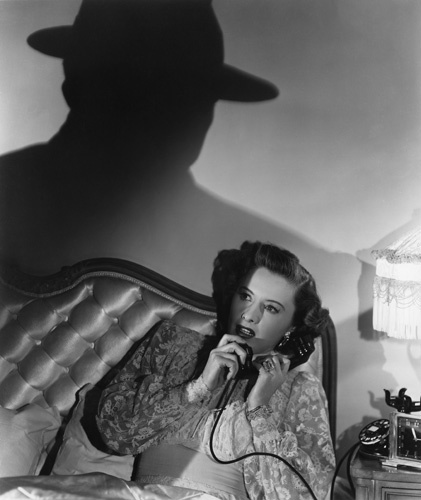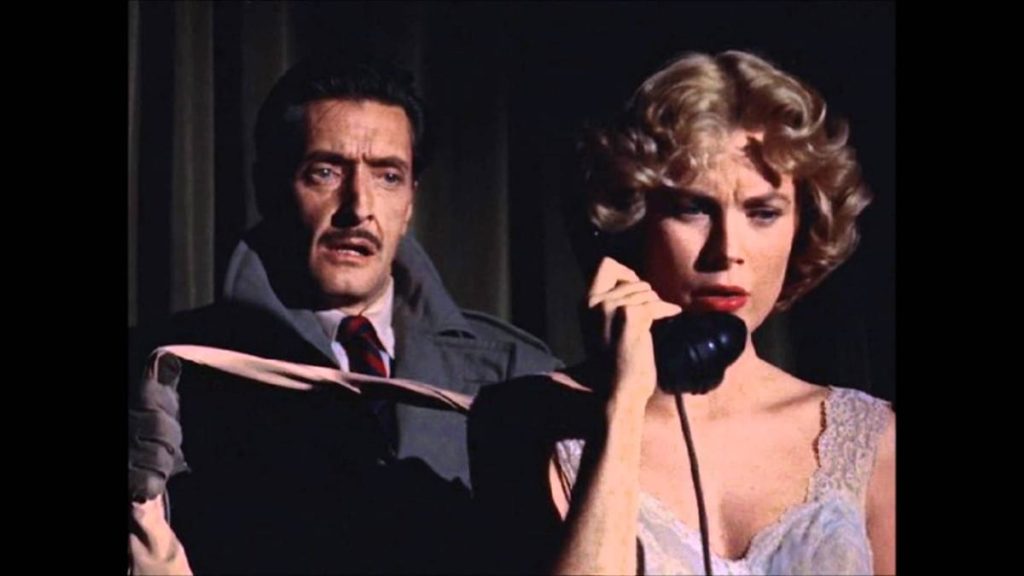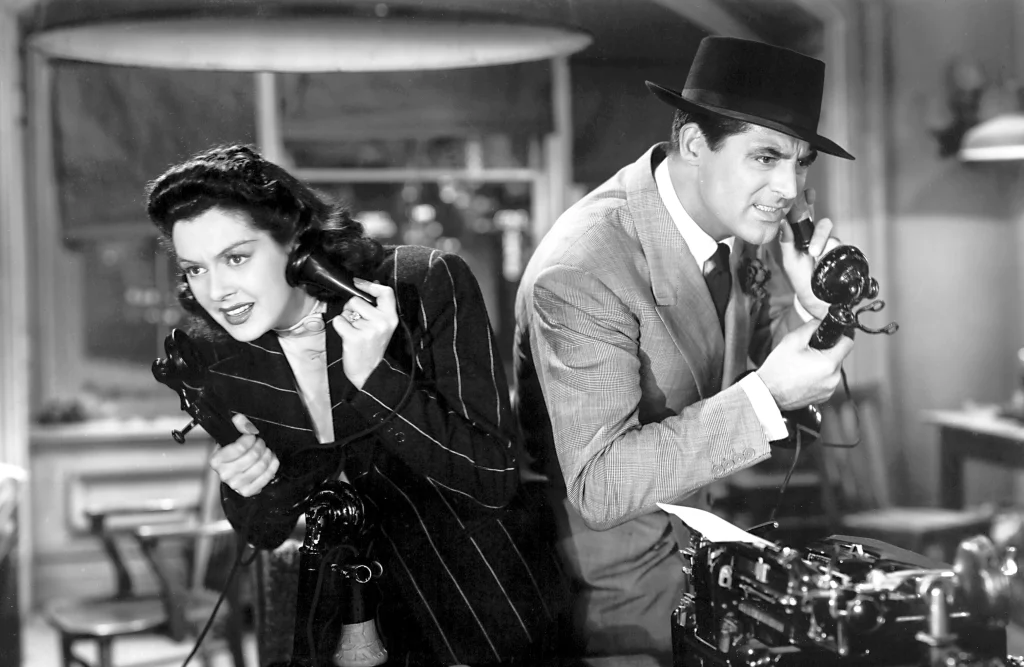Someday, and probably soon, film scenes with telephones will feel like a strange sci-fi. But there was a time when landlines and handsets were cutting edge technology and phone booths were a staple of modern life. The ability to speak to someone across miles seemed like magic when it debuted. Soon, every household had the device wired into their walls.
Whether calling over a long distance or a couple of blocks, every handset had its own code. Before dials, users needed help from an operator who would literally connect the ends of wires via a switchboard. Phone numbers were combinations of words (an exchange) and numbers, like Pennsylvania 6-5000, Murray 5-9975, or Butterfield 8. Swanky.
There were also party lines, common in rural areas. These communication loops serviced multiple households, meaning one could pick up the phone and hear other people already having a conversation. It was common to eavesdrop as well as share important information with neighbors.

Phones indicated someone was calling by literally ringing a bell. The term “ringing off the hook” referred to a phone ringing so much that it rattled the handset loose. There was also a time when one got a ‘busy signal’ if the number you were trying to call was in use. There was no call waiting, or getting an answering machine.
Now, phones are wireless, and do much more than make calls but these films make telephones an integral part of the plot. The scenes are ones that will never be made again because the cultural use of phones and communication has changed so much.
Sorry, Wrong Number (1948)
Barbara Stanwyck stars as spoiled, bedridden socialite Leona Stevenson. She finds herself home alone – no husband, no servants, no family. She picks up the phone and overhears a conversation between two men.
She realizes they are plotting a murder, but the crossed-wire connection drops before she gets very many details. She calls the cops, and the operator, but there isn’t enough information to go on. As the night wears on, she becomes increasingly paranoid and hysterical.
The concept is so simple, and so effective, that it was written as a radio play first and was an instant success. The film adaptation was also a smash, and various television movies followed.
Midnight Lace (1960)
One of Doris Day’s dramatic roles, she is pitted against a husband who doesn’t believe she is being threatened by phone. A disembodied voice speaks to her on a foggy night in the park, then continuously rings her apartment – always when her husband is out. Starring Rex Harrison and Myrna Loy, it’s a stylish, mod movie set in London with excellent acting and true tension. The solution isn’t as effective as the suspense is throughout. Hearing the phone ring really does make one jump after a few terrifying moments.
 Dial M for Murder (1954)
Dial M for Murder (1954)
A perfectly-timed phone call is the catalyst for a precise and dastardly homicide. A husband plots to kill his wealthy wife, but the crime goes wrong. He is now forced to play the sympathetic husband all the while trying to avoid prosecution – and perhaps even finishing the job himself.
When Hitchcock filmed the Grace Kelly thriller, 3D was all the rage. He went as far as to film the (failed) murder scene in 3D, making Kelly’s outstretched hand reaching for the audience more intense. The final release was in 2D, however, as the fad had passed by the time it reached theaters
His Girl Friday (1940)
The classic screwball comedy features zippy dialog and absurd jokes amidst the once-in-a-career breaking news story for reporter Hildy Johnson, played to the hilt by Rosalind Russell. She and Cary Grant trade mile-a-minute barbs, all while chasing the story.
Truly, telephones play a pivotal role in many scenes and plot points in the movie. It’s used to greatest effect in the pressroom as beat reporters phone in to their copy desks and relay details moment by moment.

When A Stranger Calls (1979)
If you’re up for a bit of cheesy 1970s horror, with a simple premise, there is always this classic based on an urban legend. Carol Kane plays the teenage babysitter watching two sleeping children. She is trying to do her homework, but the landline keeps ringing and a strange voice asks her, “Have you checked the children?” Throughout the night the voice adds details that could only be known by someone who can see her. Her pleas to the police are futile – no one has done anything… yet.
Pillow Talk (1959)
In Pillow Talk, Doris Day and Rock Hudson share a party line assigned to their block. She’s requested her own, but the phone company is overwhelmed and so she is constantly annoyed when she tries to make a call only to find her neighbor wooing ladies over the phone. A silly romantic comedy plot follows – the first comedy for Hudson and the first sexy romance for Day – revolving around phone calls and eavesdropping. It’s also known for the split screen phone call shot, which would be imitated and parodied for decades. (See Down With Love from 2003)
Originally written for DVD Netflix
